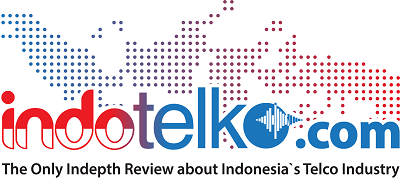Interconnection Rates Recalculation Still not Finished
11:12:50 | 25 Mar 2016

Ilustrasi (dok)
JAKARTA (IndoTelko) - The ongoing interconnection rates recalculation by the regulators is fueling divisions among telecom operators in the field.
It is implied from the group of operators who want a decrease greater than 10 percent in interconnection rates, while on the other group don’t want a drastic decrease.
Interconnection charge is a components issued by the operator to carry out cross-network calls, in determining the retail rates besides margins, marketing costs, and others.
The interconnection rates calculation method is using the Long Run Incremental Cost (LRIC) from the dominant operator's data.
Referring to the Regulation of the Minister of Communication and Information’s No. 8/2006, the definition of dominant operator is that who owns a market share or revenue of 25% of certain market segments.
Recalculation of interconnection fees was phenomenal in 2009 where the retail rates declined to about 20% -40%. As for the 2011 recalculation did not significantly impacting the retail rates to decline because it was only about 6%.
For the current calculation, the government is assisted by Tritech consultant as it was done in 2011, meanwhile in 2009 the government was assisted by Ovum consultant.
Parallel
Smartfren Telecom President Merza Fachys predicts that if interconnection tariff reduction is only 10%, the retail rates would also dropped paralelly. "The retail rates must not decline more than 10%. We expect a the decline is significant according to the Minister of Communication and Informatics Technology's philosophy, the difference between the off-net and On-net calls must not too far apart. At least the difference is doubled or three times," he said. Merza said that so far there has been no decision from the regulator, which sparked a tug of war between those who want a drastic and gradual reduction. "The struggle will last long. So, we'll see when it was announced," Merza said. Tri Indonesia's Deputy Director Muhammad Danny Buldansyah claimed to have the calculations using the LRIC scheme for his company. "That's if our calculation can be dropped to 50%. Logically, if the small players like us who have an infrastructure spending is willing to reduce to 50%, the dominant players with more spending must certainly cheaper," he said. Danny added that Business to business (B2B) negotiation is a way out that can be done if the government decided to decrease only by 10%. "The interconnection tariff is a reference, so it should be OK if the B2B agreed to reduce under or above the Interconnection Offering List (DPI). Later we can do something with volume as long as the retail rates are not uniformed," he said. In supporting the statement, XL President Director Dian Siswarini reminded that the Interconnection rate significant reductions will affect the retail rates which later would be burdened to the customer. "It would be better if its down 40%, to make us easier to be creative when packing and offering bundling package to the customers. This is because the off net price is expensive, people are still using many cellular numbers," she said. Indosat President Director & CEO Alexander Rusli reminded that the decline is only Rp1 from the talks that took place three years ago. "We expect it reduced further down now. That number was no longer rational," he said. While the President Director of Telkomsel Ririek Adriansyah opted to wait for the goverment's assurance regarding the amount of interconnection rates reduction. "Let's wait for the final," he concluded. Separately, members of the Legal Affairs Committee of the Indonesian Telecommunications Regulatory Body (BRTI) I Ketut Prihadi Krishna said that they still have to discuss further the results of the calculations. "We still need to discuss it again because it is not possible to use a different calculation, or using the asymmetric scheme where the price applied differently by operators. Besides, different calculation does not reflect the direction of our policy. Retail rates and interconnections should be reduced," he said. Prihadi added that regulators are still looking for the interconnection rates price that could be accepted by all parties and influence the decrease in retail rates. Earlier, Minister of Communication and Informatics Technology Rudiantara said that the interconnection rate calculation would be finished by April 2016. The minister is signaling the decrease would be more than 10%. "Based on the average the decline must be significant or above 10 percent. The goal is to make the industry more efficient. But this is for reference purposes only, not a certainty. In other words, they should be no business to business agreement and if there are disputes then it can refer to this," he explained. (es)
Baca juga :
•
•
•
Smartfren Telecom President Merza Fachys predicts that if interconnection tariff reduction is only 10%, the retail rates would also dropped paralelly. "The retail rates must not decline more than 10%. We expect a the decline is significant according to the Minister of Communication and Informatics Technology's philosophy, the difference between the off-net and On-net calls must not too far apart. At least the difference is doubled or three times," he said. Merza said that so far there has been no decision from the regulator, which sparked a tug of war between those who want a drastic and gradual reduction. "The struggle will last long. So, we'll see when it was announced," Merza said. Tri Indonesia's Deputy Director Muhammad Danny Buldansyah claimed to have the calculations using the LRIC scheme for his company. "That's if our calculation can be dropped to 50%. Logically, if the small players like us who have an infrastructure spending is willing to reduce to 50%, the dominant players with more spending must certainly cheaper," he said. Danny added that Business to business (B2B) negotiation is a way out that can be done if the government decided to decrease only by 10%. "The interconnection tariff is a reference, so it should be OK if the B2B agreed to reduce under or above the Interconnection Offering List (DPI). Later we can do something with volume as long as the retail rates are not uniformed," he said. In supporting the statement, XL President Director Dian Siswarini reminded that the Interconnection rate significant reductions will affect the retail rates which later would be burdened to the customer. "It would be better if its down 40%, to make us easier to be creative when packing and offering bundling package to the customers. This is because the off net price is expensive, people are still using many cellular numbers," she said. Indosat President Director & CEO Alexander Rusli reminded that the decline is only Rp1 from the talks that took place three years ago. "We expect it reduced further down now. That number was no longer rational," he said. While the President Director of Telkomsel Ririek Adriansyah opted to wait for the goverment's assurance regarding the amount of interconnection rates reduction. "Let's wait for the final," he concluded. Separately, members of the Legal Affairs Committee of the Indonesian Telecommunications Regulatory Body (BRTI) I Ketut Prihadi Krishna said that they still have to discuss further the results of the calculations. "We still need to discuss it again because it is not possible to use a different calculation, or using the asymmetric scheme where the price applied differently by operators. Besides, different calculation does not reflect the direction of our policy. Retail rates and interconnections should be reduced," he said. Prihadi added that regulators are still looking for the interconnection rates price that could be accepted by all parties and influence the decrease in retail rates. Earlier, Minister of Communication and Informatics Technology Rudiantara said that the interconnection rate calculation would be finished by April 2016. The minister is signaling the decrease would be more than 10%. "Based on the average the decline must be significant or above 10 percent. The goal is to make the industry more efficient. But this is for reference purposes only, not a certainty. In other words, they should be no business to business agreement and if there are disputes then it can refer to this," he explained. (es)
Artikel Terkait
-
 English Ver. - 06:14:00 | 31 Mar 2024PasarPolis has successfully expanded its operations beyond Indonesia
English Ver. - 06:14:00 | 31 Mar 2024PasarPolis has successfully expanded its operations beyond Indonesia -
 English Ver. - 08:22:00 | 11 Mar 2024Icon Plus was honoured as the recipient of the Broadband Telecom Company of the Year
English Ver. - 08:22:00 | 11 Mar 2024Icon Plus was honoured as the recipient of the Broadband Telecom Company of the Year -
English Ver. - 05:35:00 | 08 Mar 2024To ensure that this target is met, the company employed several strategies and methods
-
 English Ver. - 03:00:00 | 29 Jan 2024Sustainable sectors, including green tech, electric vehicles, climate tech, and health tech are gaining increased attractiveness
English Ver. - 03:00:00 | 29 Jan 2024Sustainable sectors, including green tech, electric vehicles, climate tech, and health tech are gaining increased attractiveness
Rekomendasi
Berita Pilihan
More Stories
PR Newswire













































































